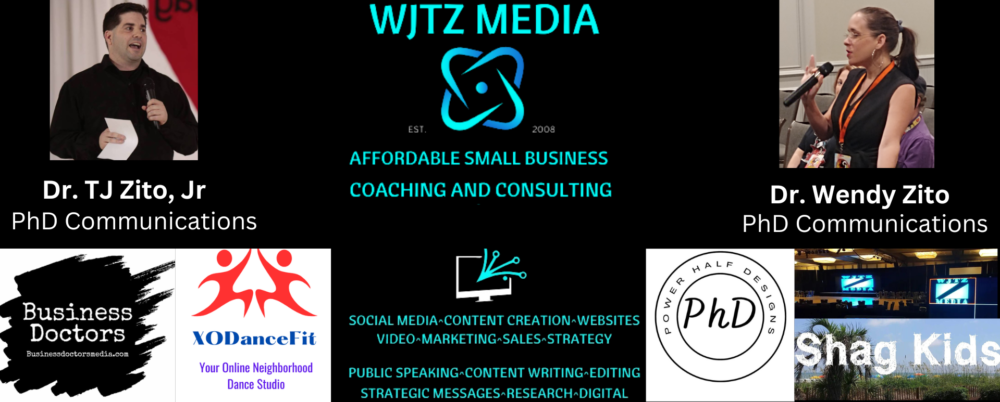Read Dr. TJ Zito, Jr.’s groundbreaking Dissertation PhD study on Copresence and the Performance of Zoom Video Collaborations. Click the link page to visit Digital Commons.
“Video Collaboration: Copresence and Performance” by Thomas James Zito Jr. (liberty.edu)

ABSTRACT
The purpose of this qualitative narrative theory study on video collaboration platform use
is to explain how an individual’s on-screen performance and their interpersonal verbal and
nonverbal communication contributes to engagement and copresence with their audience.
The literature review analyzes critical interpersonal communication theories to explain how this
affects engagement and copresence levels in mediated virtual environments. The research was
conducted by interviewing thirty professional businesspeople about their video
collaboration experiences during the COVID-19 2020 shutdown.
The interview respondents told stories of business communication successes and failures that corresponded to the scholarly theories in the literature review. The respondents discussed how verbal and nonverbal communication was used successfully and unsuccessfully. They also discussed why their
companies found communicating virtually with video collaboration challenging during the COVID-19 shutdown.
A final discussion analyzes how communication theory and practical
experience combined to explain how verbal and nonverbal communication impact mediated
virtual communications when using video collaboration. This study offers a model to help
explain how interpersonal communication, engagement, and copresence exist in a cyclical
motion. This model can help business people and scholars communicate via video collaboration platforms in a mediated virtual environment.
Keywords: Copresence, Video Collaborations, Video Calls, Zoom, Google Team
“Video Collaboration: Copresence and Performance” by Thomas James Zito Jr. (liberty.edu)





